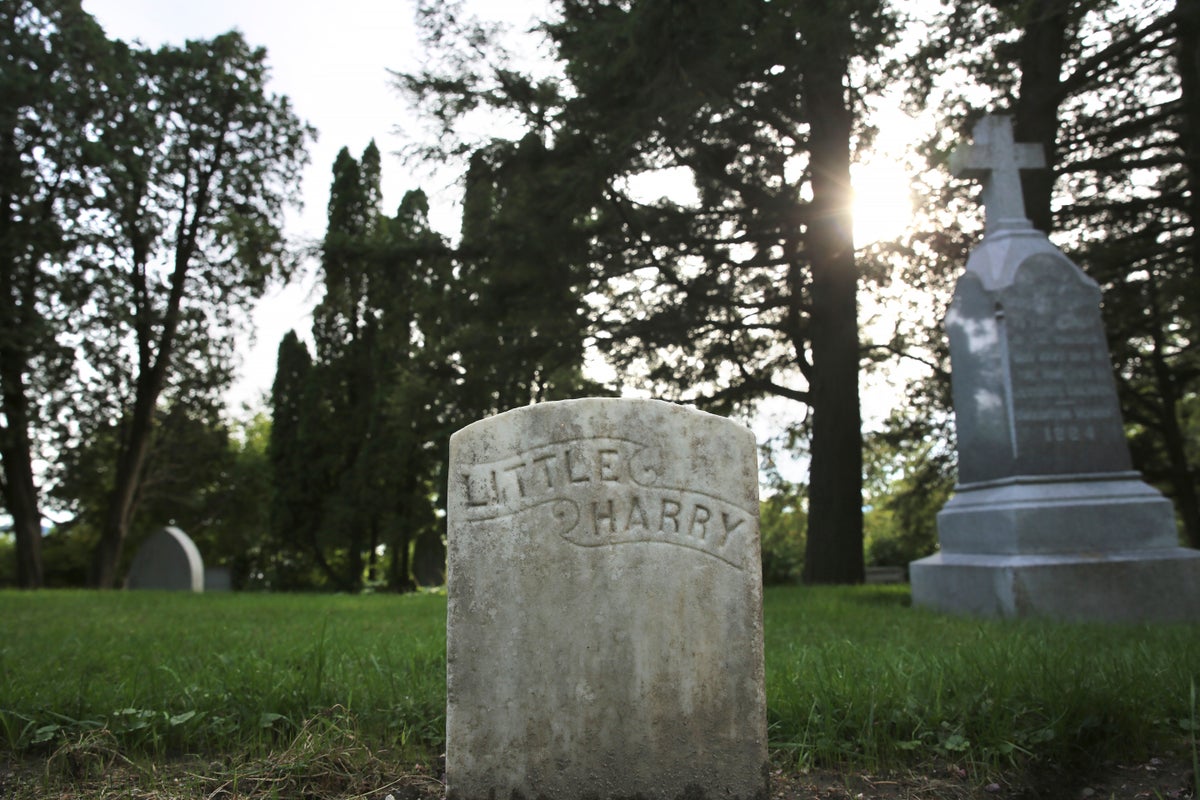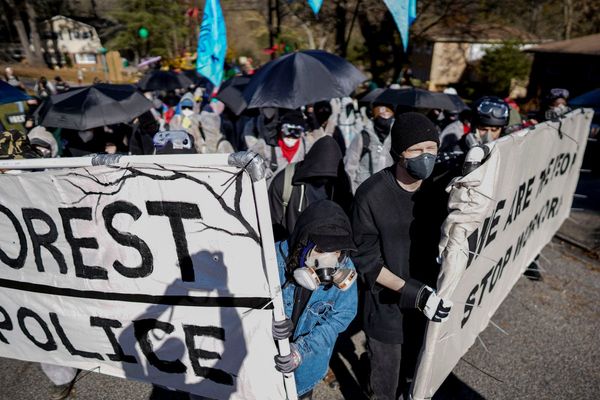
Among the graves at a scenic lakeside cemetery in Vermont is a row of 51 small headstones. There’s one for Little Harry, Baby Ruth and Baby Kirk, as well as for many other children like William and Willis Colby, Ethel Fuller and Claire Wilson.
The line of tombstones — less than knee high — mark the graves of children who died in the late 1800s and early 1900s while living at the Home for Destitute Children, a former orphanage and boarding house in Vermont's largest city of Burlington that served children from around the state.
But over the years, the headstones have fallen into disrepair.
Many were tilted forward or back, and at least one was broken, so a group of about 30 volunteers this month set about repairing them. They restored the gravestones, resetting them and cleaning them in what they described as a memorable morning.
“It just really felt like we were honoring and respecting and regarding these young people who lived and died so many years ago,” said one of the volunteers, Denise Vignoe, a spokesperson for the social service organization the Howard Center, about the children.
The work involved pulling up the stones, digging holes for them, removing any cement, and making sure the line of graves along a road in the tree-filled cemetery that slopes down toward the lake was straight. Then material was added to keep the stones in place, and they were cleaned and scrubbed so that the names can be read.
The Howard Center has historical ties to the Home for Destitute Children, which was formed in the 1860s by some middle-class and wealthy women to serve Vermont children orphaned by the Civil War, according to University of Vermont professor Meghan Cope, who has researched the home.
It grew to serve a much broader population of children later, and only a small percentage were actually orphans, she said. They came from families in crisis and under a variety of circumstances, from a parent dying to poverty and neglect.
“There were a lot of children in a lot of different circumstances and it also varied over time,” said Cope. “The organization was a statewide organization so there were kids from all over Vermont.”
Such facilities were common in the 19th and early 20th century with all major cities having them as well as most states, Cope said. But not all children in need were sent to the Home for Destitute Children. Some whose families were in crisis were taken in by neighbors or relatives, she said.
Without the benefits of modern medicine, children in the late 1800s died from multiple diseases and ailments like tuberculosis, diarrhea, diphtheria and scarlet fever. As a result, deaths at homes like this were not usual. At the Home for Destitute Children, some infants died from what was reported to be teething but Cope suspects it was a more serious cause with teething as the most obvious symptom.
“If a child had an ear infection, or a fever, or had picked up a stomach bug, which is incredibly common, because the water sources weren't very well treated, they could very well be suffering from something much more major but the teething is what's apparent,” she said.
While there was likely some abuse, Cope said she does not suspect that children were abused like they were at the now-closed St. Joseph's Orphanage in Burlington. Former Attorney General T.J. Donovan said in 2020 that it was clear that children suffered while staying there and that the Vermont law enforcement community failed to protect the children. St. Joseph's Orphanage closed in 1974.
“I have no doubt at all that kids got smacked, every kid got smacked in that era, but the level and severity of abuse that happened in St. Joseph’s I really don’t see that that would have been possible. The home was far more transparent,” Cope said of the Home for Destitute Children.
In the over 40-year span that Cope examined, between 65 and 100 children were living at the facility at any given time.
“I think probably during the Depression for a lot of families it was better to board their kids than not to feed them,” she said.
In 1893, the home was destroyed by fire, leaving 71 children homeless, according to the Howard Center. A new building was dedicated in 1898 and eventually in 1945, the name was changed to The Children’s Home to reflect its shift to a treatment-oriented institution serving children with special needs, according to the Howard Center.
At Lakeview, which the city describes as an example of a Victorian lawn park cemetery, next to Lake Champlain and the city's bike path, a Howard Center employee had noticed the condition of the children's headstones and suggested that they be improved. The Howard Center did some research on preservation and contacted the Vermont Old Cemetery Association, which led the restoration work.
“You can’t look at the the names of those children and see the names there and see how their life was cut so short — and we don’t even know why it was cut short — and not do something to just try to preserve their memory,” said Tom Giffin, president of the Vermont Old Cemetery Association. “They certainly deserve that.”







